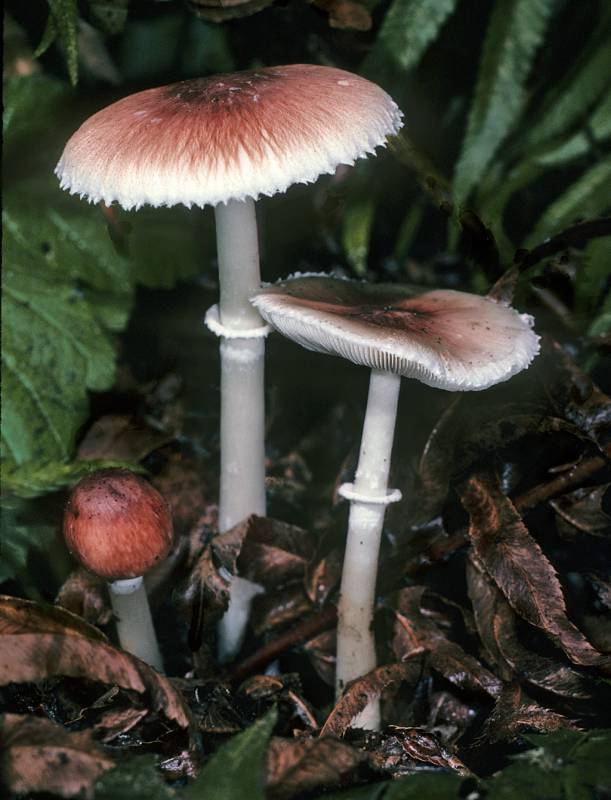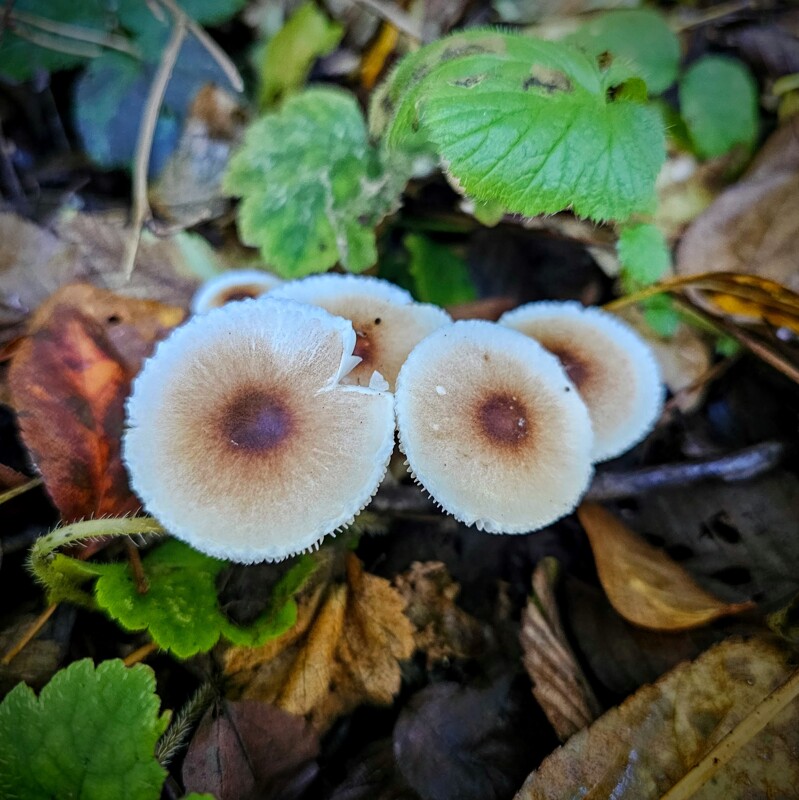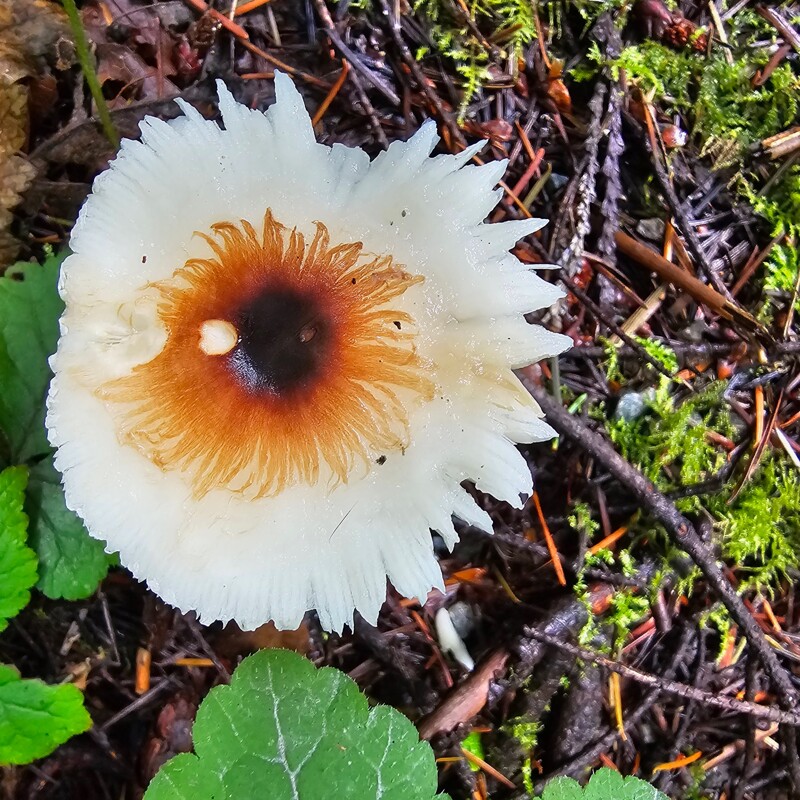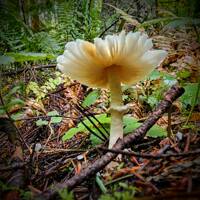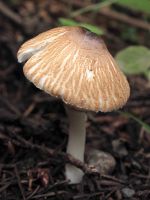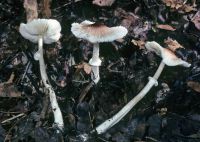Habitat: Very common and conspicuous in coastal and lower elevation forests.
Conservation Status: Not of concern
Edibility: It is medium-sized and has a convex to more broadly expanded cap that is some shade of reddish brown to pinkish brown; the margin soon splits and exposes the whitish flesh so that it has radiating lines of reddish- to pinkish brown color. The gills are white and do not stain or discolor. The stipe is whitish, club-shaped or enlarged at the base, and typically has a thin, fragile, movable ring that is white with pinkish tints on the underside. L. rubrotinctoides generally has been called Leucoagaricus rubrotinctus (Peck) Singer, a species from eastern North America.
It is medium-sized and has a convex to more broadly expanded cap that is some shade of reddish brown to pinkish brown; the margin soon splits and exposes the whitish flesh so that it has radiating lines of reddish- to pinkish brown color. The gills are white and do not stain or discolor. The stipe is whitish, club-shaped or enlarged at the base, and typically has a thin, fragile, movable ring that is white with pinkish tints on the underside. L. rubrotinctoides generally has been called Leucoagaricus rubrotinctus (Peck) Singer, a species from eastern North America.
PNW Herbaria: Specimen records of Leucoagaricus rubrotinctus in the Consortium of Pacific Northwest Herbaria database
CalPhotos: Leucoagaricus rubrotinctus photos

